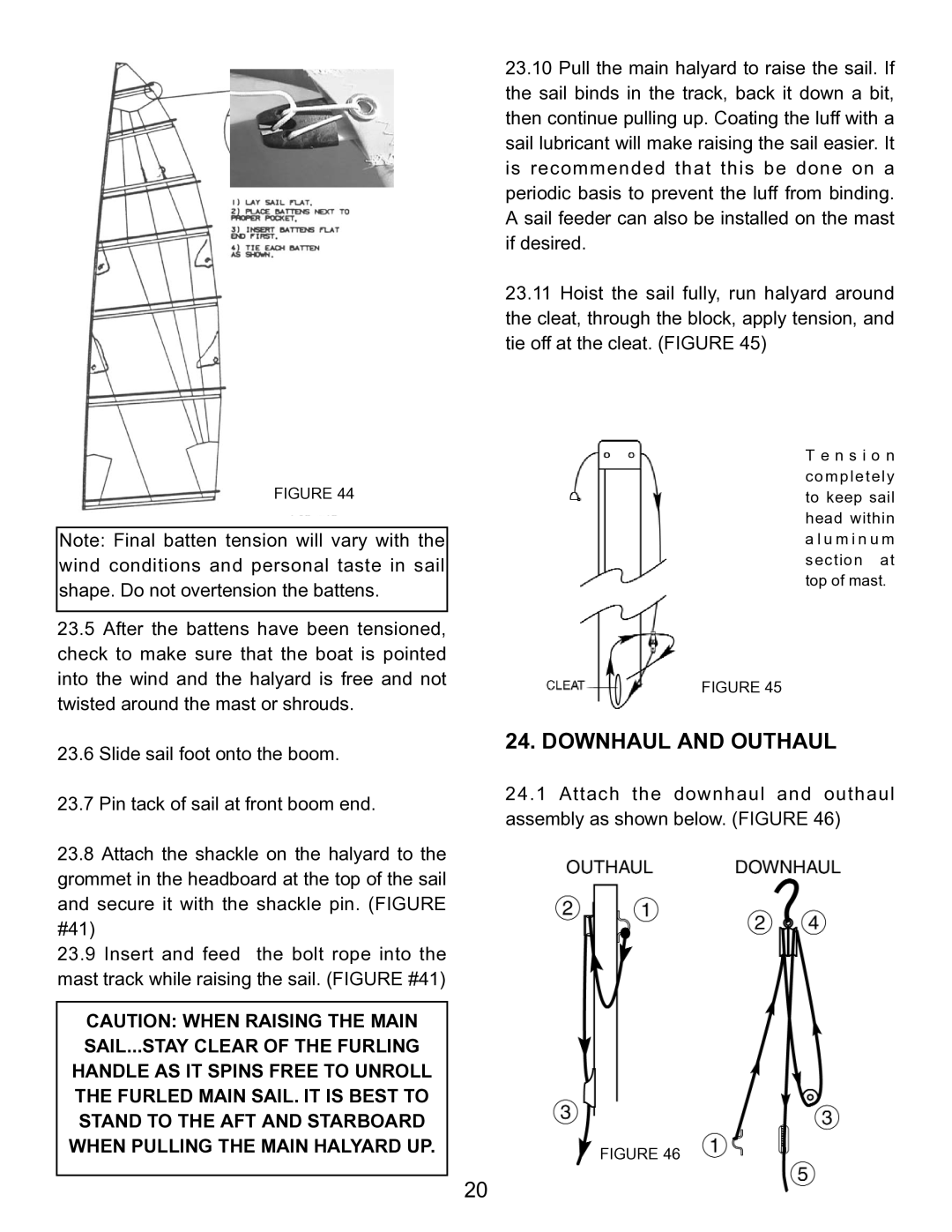
FIGURE 44
Note: Final batten tension will vary with the wind conditions and personal taste in sail shape. Do not overtension the battens.
23.5After the battens have been tensioned, check to make sure that the boat is pointed into the wind and the halyard is free and not twisted around the mast or shrouds.
23.6Slide sail foot onto the boom.
23.7Pin tack of sail at front boom end.
23.8Attach the shackle on the halyard to the grommet in the headboard at the top of the sail and secure it with the shackle pin. (FIGURE #41)
23.9Insert and feed the bolt rope into the mast track while raising the sail. (FIGURE #41)
CAUTION: WHEN RAISING THE MAIN SAIL...STAY CLEAR OF THE FURLING HANDLE AS IT SPINS FREE TO UNROLL THE FURLED MAIN SAIL. IT IS BEST TO STAND TO THE AFT AND STARBOARD WHEN PULLING THE MAIN HALYARD UP.
23.10Pull the main halyard to raise the sail. If the sail binds in the track, back it down a bit, then continue pulling up. Coating the luff with a sail lubricant will make raising the sail easier. It is recommended that this be done on a periodic basis to prevent the luff from binding. A sail feeder can also be installed on the mast if desired.
23.11Hoist the sail fully, run halyard around the cleat, through the block, apply tension, and tie off at the cleat. (FIGURE 45)
T e n s i o n completely to keep sail head within a l u m i n u m section at top of mast.
FIGURE 45
24. DOWNHAUL AND OUTHAUL
24.1 Attach the downhaul and outhaul assembly as shown below. (FIGURE 46)
FIGURE 46
20
